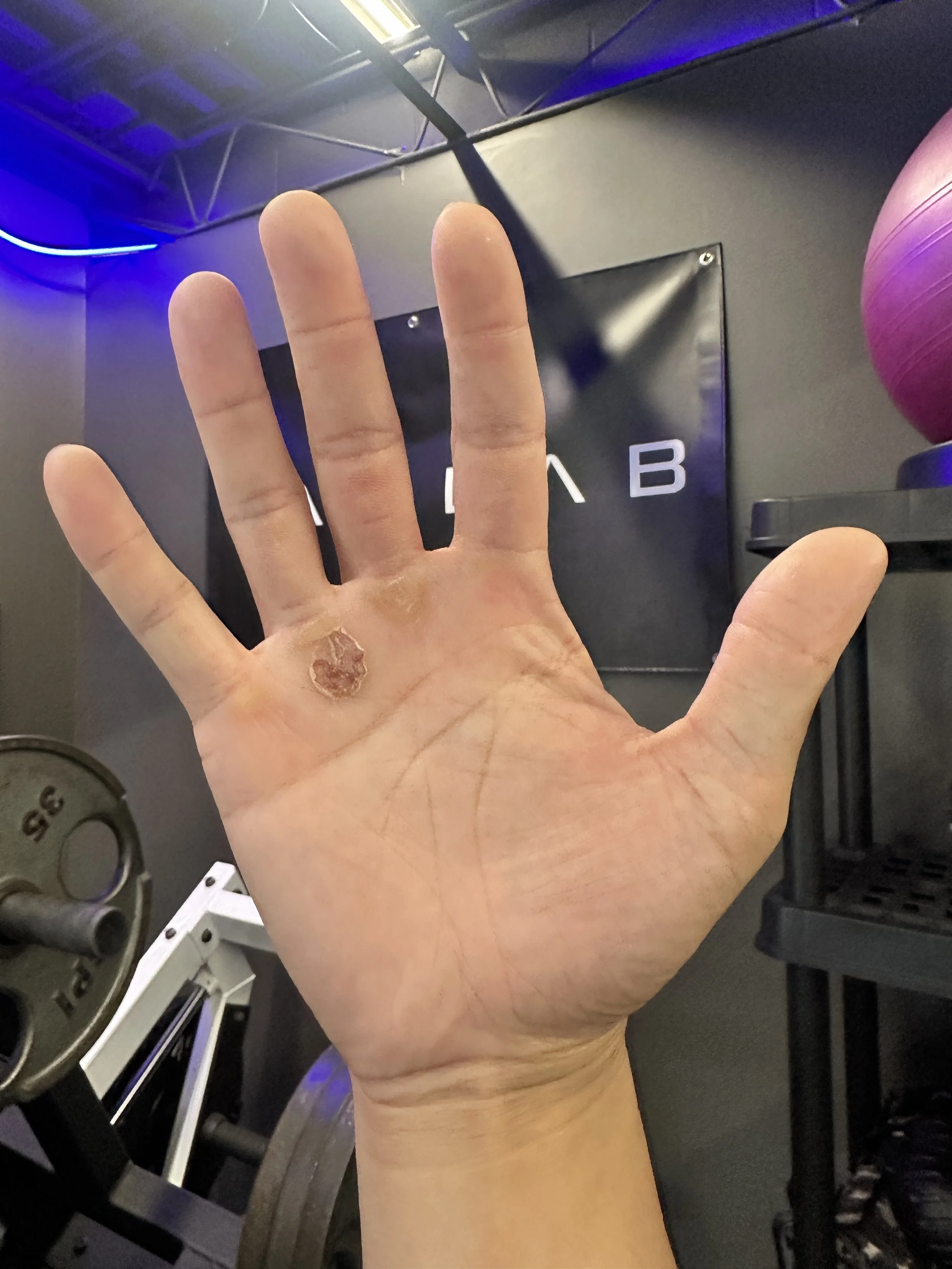Training, Pain, and Setbacks
How to Handle INJURY Without Losing Momentum
One of the biggest questions clients ask me is: “Is pain normal?” The honest, unbiased answer is: sometimes, yes — but not always.
When Pain Is Normal
Some pain is part of training. Muscle soreness after a new or harder workout, mild stiffness, or a little achiness that fades in a day or two — that’s expected. It’s your body saying, “Hey, we did something new, and now we’re adapting.”
When Pain Is Not Normal
Sharp, stabbing pain in a joint? Swelling that lingers? Pain that makes it hard to move or gets worse instead of better? That’s a red light. That type of pain isn’t just part of progress — it’s your body telling you something needs to change.
I heard this analogy from a famous coach named Tom Purvis… he compared the idea of how much you should push your body to a callus or a blister. Ironically, which I have both at the time of writing this for randomly attempting a muscle-up PR (serves me right).
The good kind of pain is like a callus.
The bad kind of pain is like a blister.
If you’ve been training for a while, calluses form naturally — your body adapts without you even noticing. But if you push too hard and overload the system, you get a blister.
Same with training:
Good pain = normal adaptation. It fades in a day or two.
Bad pain = lingers, limits your movement, and signals something’s off.
The Setback Problem
Here’s where most people get discouraged. They hit a red light, feel pain, and think, “That’s it, I can’t train anymore.” They stop, lose consistency, and fall out of rhythm. And that’s where real progress gets derailed.
The truth? Setbacks and flare-ups are part of the process. Even elite athletes deal with them. The difference is, athletes don’t stop — they adjust. And that’s the mindset I want my clients to have too.
How to Reframe Pain
When pain shows up, think of it as feedback, not failure. Your body isn’t saying “quit” — it’s saying “pivot.”
Normalize it: Setbacks are common. You’re not broken.
Highlight wins: Remember the progress you’ve already made. One bad day doesn’t erase months of work.
Refocus: Pain means we need to change something — not stop everything.
Insight: Complex, multi-joint exercises are the most demanding — and the most valuable, because life itself is multi-joint. But when the body isn’t ready, it’s smart: it compensates. It’ll borrow the wrong muscles or overload certain joints just to get the job done. That’s where pain shows up.
Pain is really a data point — showing us where connections are missing. We can then use more isolated exercises to strengthen the weak link, rebuild the chain, and return to complex movements stronger.
What to Do in the Gym After BAD PAIN
Swap, don’t stop. If a movement hurts, change the exercise. Can’t deadlift heavy today? Try rack pulls, hip thrusts, or glute bridges.
Train what’s pain-free. Knee hurts? Upper body & core still need love.
Reset short-term goals. Instead of chasing a PR this week, aim for pain-free ROM, extra reps with lighter weight, or a strong upper body finisher.
Recover. Every workout you do adds stress to your body — and that’s not a bad thing. Stress is what triggers growth and adaptation.
But when stress piles up without enough recovery, that’s when problems start. Training 7 days a week, pushing for personal bests week after week, ignoring soreness or aches, all while under eating protein and calories, skimping on sleep, skipping hydration, or dealing with daily life stress — family, bills, relationships — it all adds up.
When your system is overloaded, your body’s ability to repair and regenerate tissue is reduced because energy is being taken away to handle immediate stress. That includes your muscles, joints, tendons, and ligaments.
Recovery isn’t optional — it’s the foundation that lets your body rebuild stronger so you can keep making progress.
End on a win. Always finish with an exercise that feels good. Leave the session feeling strong, not defeated.
What to Do AT HOME After Injury
If you tweak something or feel pain beyond normal muscle soreness, here’s the order of priorities:
Lock down basics first – Sleep more and drink plenty of water. Your body heals fastest when those two are in check.
Ease back in – If things start feeling better, add light foam rolling and gentle stretching.
Go above and beyond – To speed recovery, tools like massage, red light therapy, and compression therapy can help boost circulation and healing.
Think of it as giving your body the best environment to do what it naturally wants to do: heal and come back stronger.
The Athlete Mindset
Think about it: if a pro pitcher hurts his elbow, does he quit training completely? No — he trains everything else until the elbow is ready. Same with runners, same with any athlete. You’re no different. Fitness is your sport. Stay in the game.
Final Takeaway
Pain is part of the training spectrum. Some soreness? Normal. Sharp pain that lingers? That’s your body’s red light. But either way, it’s not the end of your journey.
The most successful people in fitness aren’t the ones who never get hurt — they’re the ones who pivot instead of quit.
Coach’s rule of thumb:
If you can move, you can train. Adjust, adapt, and keep going.


